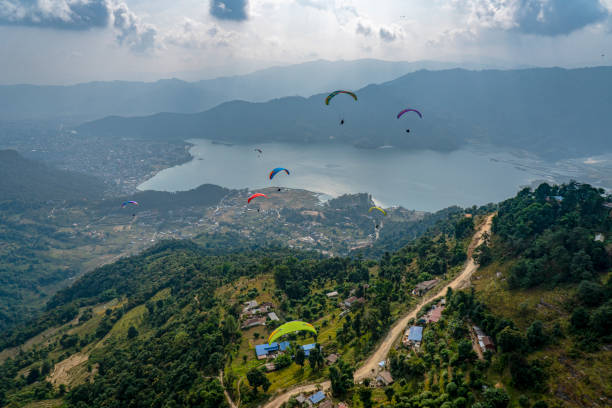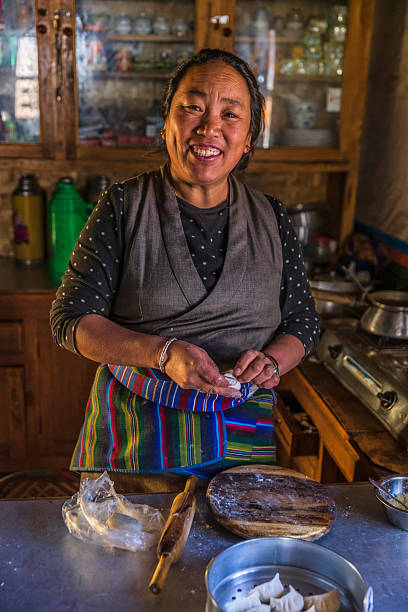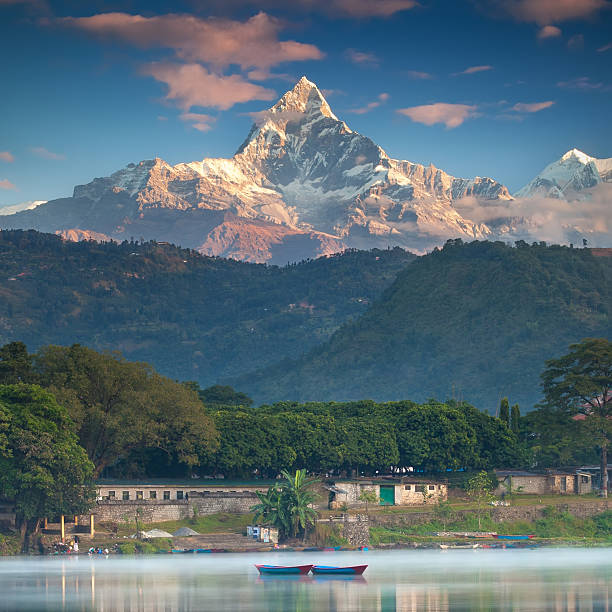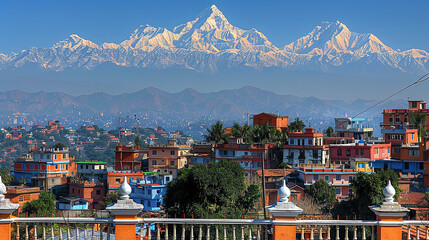Sometimes a place is a surprise to you long before you even realize that you are falling in love with it. Nepal happens to be one of such places. It doesn’t take long for it to get to you, but unlike Bali with its hard selling, or Chiang Mai with its ultra-nomad scene, or Lisbon with its pastel charm. Nepal announces its arrival quite differently. This destination doesn’t try to convince you. It’s just the way it is.
In a way, that is what makes the digital nomads leave their planned short visits and actually stay for a longer time. I have encountered travelers who had the intention of spending “maybe a week or two” in Nepal and then going to India or Southeast Asia. Three months had passed, and they were still in Pokhara. They are enjoying their masala tea with their laptops open near Phewa Lake. Live life at a gentle pace, while watching the clouds float over the Machhapuchhre mountain.
So why are digital nomads increasingly choosing to move to Nepal instead of telling it out loud? Let’s slowly, and honestly, unfold it with a combination of both the practical and the casual.
A Cost of Living That Feels Almost Unreal
It is a fact that sounds disbelieving that a country like Nepal could offer quality of life with lower budgets. For people who are coming from Europe or the USA, Nepal seems to be more affordable than any other destination.
The question that comes next is “cheap” or “low-quality”? Certainly, it is reasonable in an uncomplicated way and life seems to be easier. And one doesn’t have to take mental stress with calculations of expenses.
Here’s the honest breakdown many digital nomads end up living on:
Category Cost (USD)
- Rent (1BHK apartment) $200–$500
- Food $200–$350
- Coworking$70–$150
- Transport $50–$100
- Utilities + SIM$20–$40
- Leisure/Adventure$100–$300
Total $700–$1200 per month
In Pokhara, I have seen freelancers who rent an apartment beside the beautiful lakes for the cost of a week’s groceries in the West. And what about food? Dal bhat, momos, thukpa, fresh vegetables, mountain honey, and local trout – all are available.
You’ll not find it hard to live well here. The country has created that comfortable space for you.
Network Connectivity That’s Better Than Most People Expect
The truth is that the picture of the mountain villages with yaks still comes to the minds of non-travelers when someone mentions “Nepal”. However, Nepal is not the same. It has changed rapidly and silently.
If you are into cities and established towns, then your virtual adventures will be pretty much like you expected:
The best SIM cards for nomads:
- Ncell (fast in cities, great data packs)
- NTC (wider rural reach, improving every year)
Both provide 4G at very reasonable prices and have good coverage in the city area. Top-up can be done by any of the corner shops which would take about 30 seconds.
Those who are on long-term assignments are to know that Fiber Internet is widely available. Are you renting a fully-equipped apartment in Kathmandu or Pokhara? Trust the WiFi to be already there and good enough for your Zoom calls, uploads, editing, or even cloud work.
There was a time, in fact, when I was able to join my video meeting from the tea house rooftop in Lakeside while there was a light rainfall. The call was uninterrupted. But the sound of raindrops blended perfectly with the light of my screen. I was pondering how my life was actually like this. Nature makes you forget about time in the best way. Some places feel like they’re always shouting for your attention.
Pokhara is one of the stunning places in Nepal, similar to an image seen in a screen saver.

- A peaceful lake
- Snowy peaks
- Paragliders floating like lazy birds
- Cafés with outdoor seating
- Streets that slow you down just enough
There’s a rhythm there. Where your mornings blend into your afternoons, not because you’re lazy or not working, but your body and mind have finally relaxed after being tense for a long time.
Kathmandu is more chaotic, more textured, more alive in every possible way. It’s for people who like to enjoy rich cultural layers, cafés, and conversations. You’ll find rooftop bars overlooking ancient temples, artistic corners in Patan, and quiet courtyards where monks chant in the distance.
Both cities offer drastically different personalities. And digital nomads love having the freedom to choose their “work vibe” depending on the week.
A Culture That Feels Like a Warm Welcome
One of the things I can say with certainty is that the hospitality of the Nepalese is one of the least recognized among the great ones of the world.
The people are not merely “friendly” in the sense of the tourist industry. People here are truly warm and curious but not overly so. They are helpful but never get disappointed and very respectful in the sense that you feel you are a part of them, even.

The culture is a blend of both Hindu and Buddhist traditions, making spiritual practice a part of daily life. You can still feel it, even if you are busy with your clients in mail. Culture shapes the way you think and mindset stays the same but Nepal shapes you slowly into a calmer, softer version of yourself.
Adventure That Fits with your work environment
The fun fact about Nepal is that adventure is not something you “plan” but rather something you come across.
You have finished your job earlier than expected and now you find yourself, for instance,
- Kayaking during the sunrise
- Doing a meditation course in a monastery
- Hiking to a secret viewpoint
- Cooking momos with a local family
- Watching climbers training at mountaineering school
- Paragliding over one of the most beautiful lakes in the world
Weekends become longer as you have the feeling that everything is attainable and nearby.
What if you were a trekker? Well…Everest Base Camp Trek and Annapurna Base Camp Trek is in Nepal, after all.These trek trail is famous among trekkers. Some nomads carry their laptops with them during the whole trek and check their mail in the evenings while having ginger tea. Life becomes a combination of productivity and presence which is very rare anywhere else.
Simple visa processing for the travellers
Visa troubles are considered the number one cause of unpleasant experiences in the destination for any traveler. Unfortunately, or perhaps fortunately, Nepal does not fall into this row. This Himalayan country makes it so simple that it almost seems like a joke.
Most nationalities are eligible for:
- Visa on arrival
- Choices of 15, 30, or 90 days
- Visa extensions is easy at the local immigration office
- 150 days as the maximum time to stay in a year
How simple it is to do, which is beyond your belief. No complicated paperwork,sneaky clauses and interviews that make you feel distress.
You just have to endure the line with your money, your form, and your patience.
Places that feels Like Mini-Worlds
Every place has its own characteristics that change just like chapters in a book is one of the things I love about Nepal. Each one delivers a different spirit, a different way of life, and a different flavor of the nomad life.
Kathmandu

Thamel: Tourists, colors, cafés, live music. It’s loud, energetic, and convenient. Great, if you want to be close to everything.
Lazimpat: More peaceful, a bit more fashionable, has embassies and boutique hotels. Quick WiFi, better apartments.
Jhamsikhel (Jhamel): The one that the expats like the most. Quiet roads, nice cafés, bakeries, and coworking spaces.
Boudha: Quiet and serene. The stupa is your daily mediation. It is difficult to be nervous or anxious here.
Pokhara

Lakeside North: Quiet, beautiful, ideal for walking, working, or simply being by the river.
Lakeside Center: Cafés, bars, coworking spaces, your social zone.
Sedi: Close to the lake; Quiet; Nice apartments.
Pame: The countryside has a lovely side, wide areas, the slow life is just perfect, and you would be amazed at the quality of the sunsets.
Each district allows you to discover a different side of yourself.
Coworking Spaces That Are Actually Comfortable
Nepal’s coworking scene isn’t enormous, but it’s thoughtful and growing. The spaces are cozy, functional, and often have better coffee than you’d expect.
Kathmandu:
- Rem.Work
- Work Around
- NextWork
- Kausalya Coworking
- Clock B
Pokhara:
- Pokhara CoWork
- Himalayan Workspace
- The Juicery (café + workspace vibes)
The best part? You’ll see everyone from startup folk to trekking guides writing itineraries to solo freelancers editing videos.
It’s a real mix, and it feels human.
Safety & Health: Simple Tips, Smooth Experience
Generally, Nepal is a very safe place to be, and in particular, it is safe for solo travelers. However, every country has its own traits.
Here are some practical tips that nomads will find useful:
- Keep your bag zipped in crowded markets
- Drink only filtered or bottled water
- Kathmandu can get dusty so wearing a mask on busy roads is a good idea
- If you are going trekking or plan on doing some adventure activities, then carry travel insurance
- Learn a few Nepali phrases (people love it)
Compared to intense cities that you may have been to in Asia, Kathmandu will be simply chaotic-but-kind. How about Pokhara? It is the universe apologizing for the chaos.
When to Visit (And Why the Seasons Matter)
Nepal still has real seasons, which is quite a rare thing these days.
The best times:
Autumn (Sept–Nov): Very clear skies, fresh air, perfect for trekking. It is like everything is copied from a painting.
Spring (Mar–May): Rhododendrons come to life, days are warm, nature is bursting with colors.
These seasons give you the best sunsets, the cleanest mountain views, and the most comfortable temperatures for both work and wandering.
If you come in the winter or during the monsoon, then you will have a different version of Nepal which is quieter, moodier, and softer.
Local Etiquette That Makes Life Smoother
Nepalese culture is amazingly polite, and just a few simple habits can take you very far:
- Do not wear shoes inside homes or temples.
- Wear decent clothes when you are in the countryside.
- Do not point your feet at people or religious places.
- Greet “Namaste” with joined palms (people like it).
- Do not ever touch the head of someone (thought to be the most sacred).
- Have the virtue of patience Nepal is on “Nepali time,” and that’s fine.
These are not regulations, they are signs of mutual respect. They allow you to act like a local without any effort.
So Why Is Nepal Really Becoming the Next Top Destination for Digital Nomad ?
Nepal is the combination of all elements that works like alchemy. The price is part of the story, and so is the internet connection. The visa, the nature, the cafés, the smiling faces, why not? But even beyond all these things, Nepal has something very rare to offer: Slowing your pace but staying connected.
While at it, you can expand your company and at the same time connect with your inner self. Take it slow on the hustle of chasing deadlines. Work from anywhere and at the same time get in tune with yourself in a place that feels both ancient and alive. Nepal is a place where you get work done and at the same time, you get to enjoy life.
Maybe that is the reason why digital nomads people who are into freedom but to the same extent into finding a purpose are finally turning their interest into Nepal.

